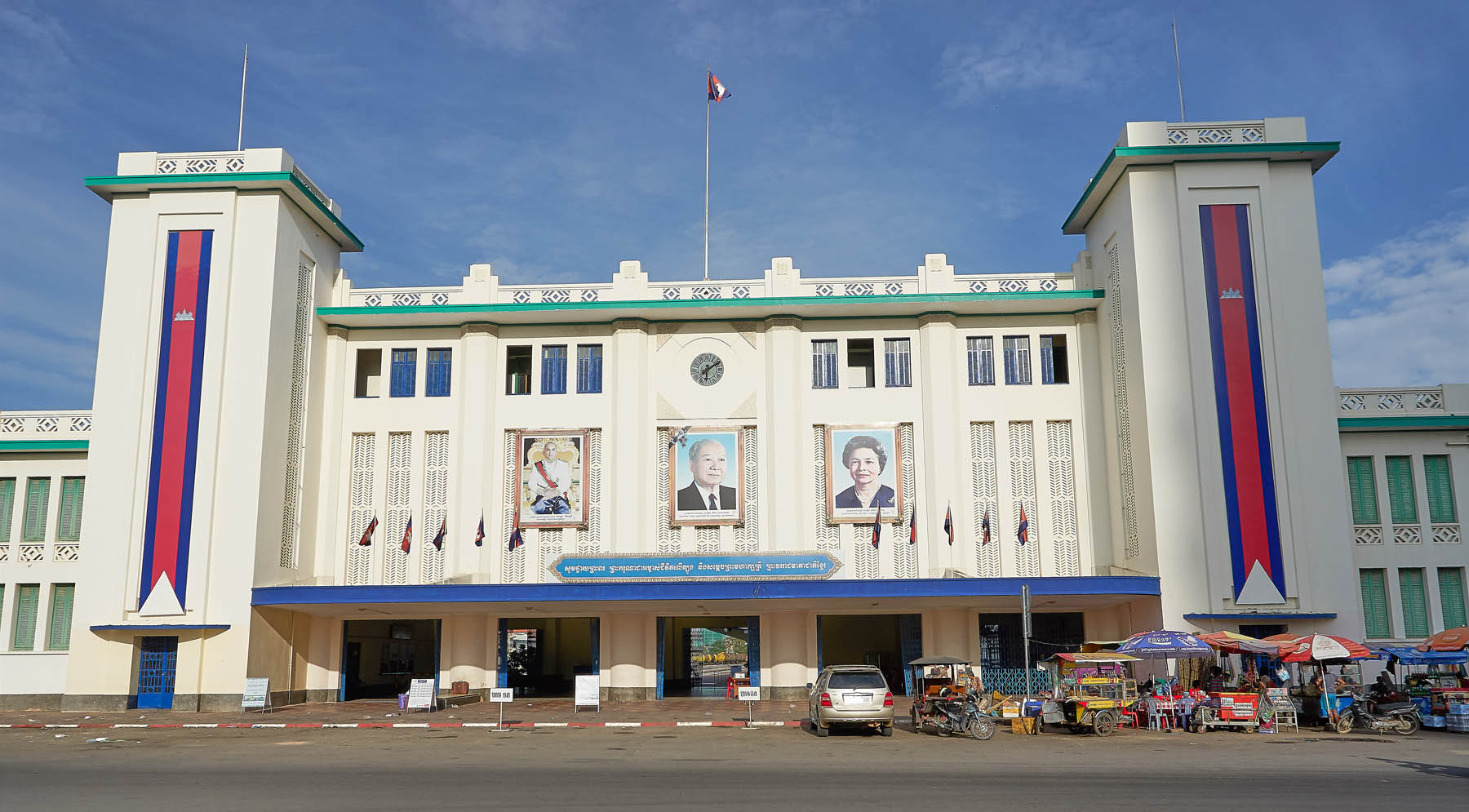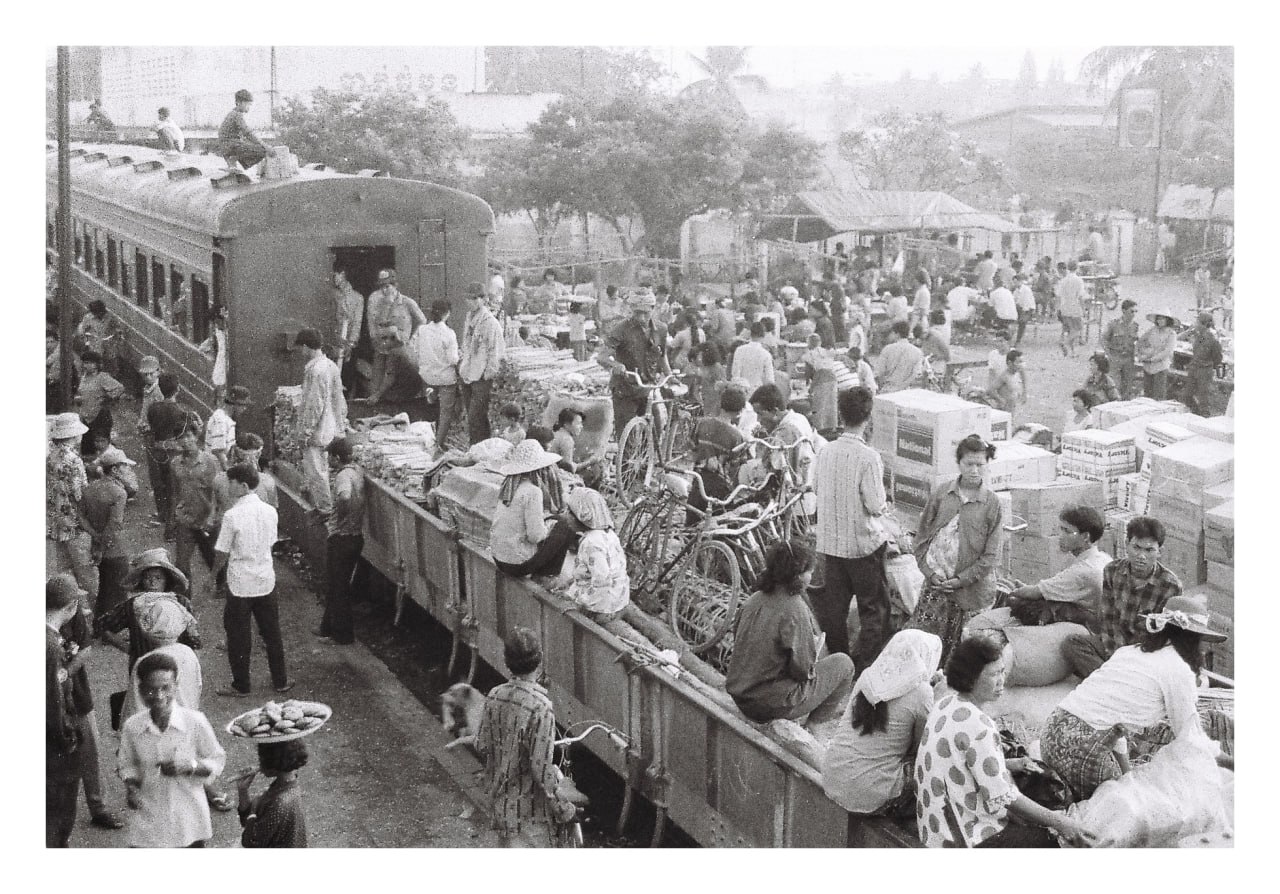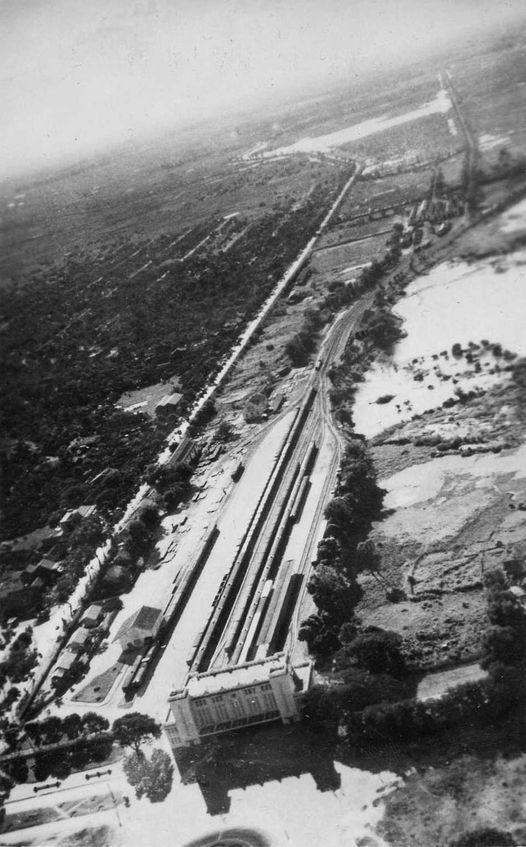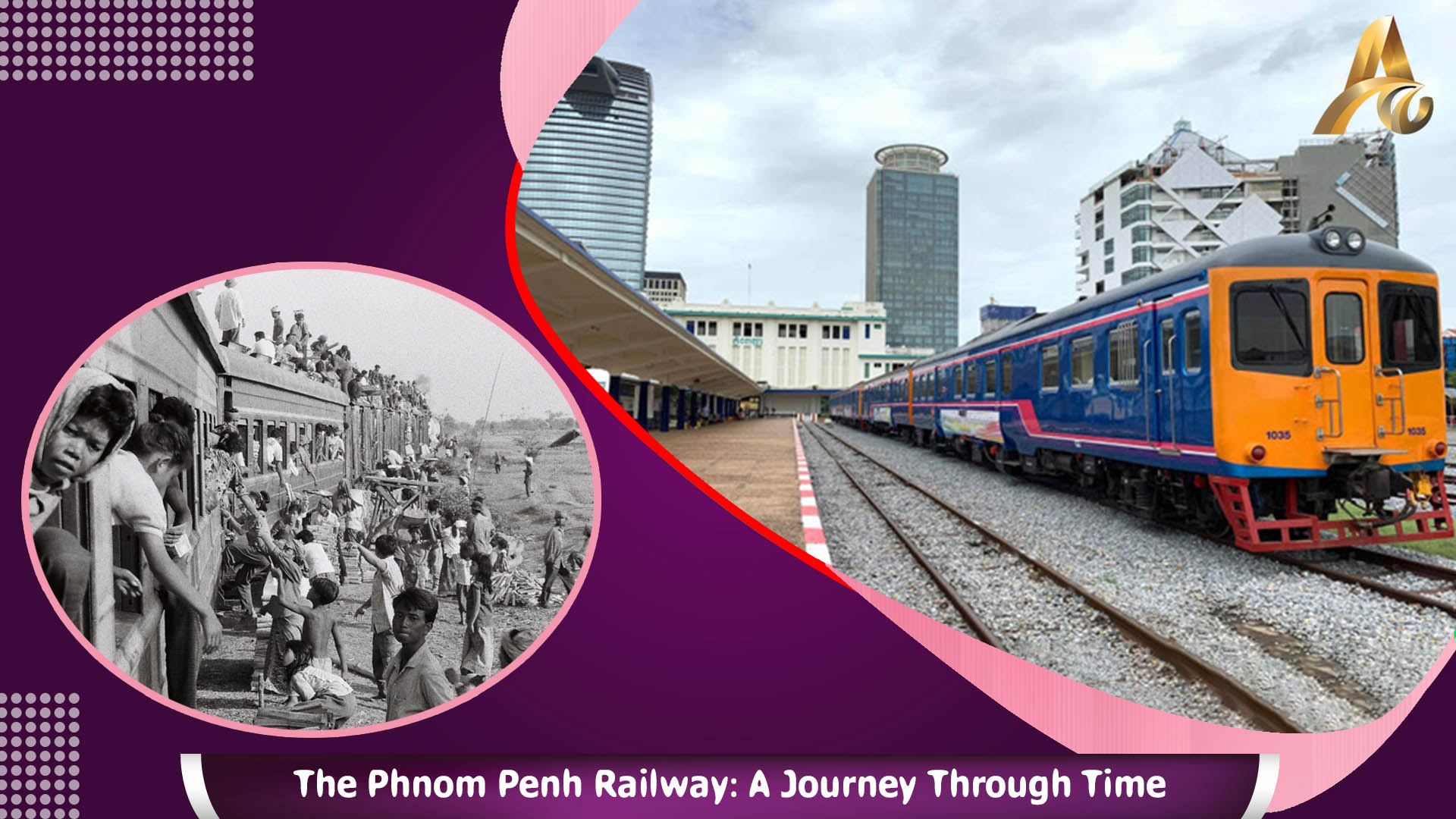Inception: A Vision of Progress (1940)
In the heart of 1940's Phnom Penh, amidst the pulsating energy of a nation on the cusp of transformation, the Phnom Penh Railway Station emerged as a beacon of progress and hope. Crafted by the visionary French architect Louis Jules Cavarro, the station's Art Deco splendor was more than just architectural achievement; it was a symbol of Cambodia's burgeoning connection with the wider world.
The railway, often likened to an iron serpent, meandered through the Cambodian countryside, connecting the vibrant capital to the vital port city of Kampot and beyond. It served as the lifeline for farmers, merchants, and families alike, turning the rhythmic beat of its wheels into the heartbeat of a nation poised for greatness.
Golden Age and Brutal Silence (1940s - 1970s)
What followed was a golden age of connectivity and prosperity, as the railway facilitated commerce, agriculture, and travel. Yet, this era of growth was abruptly halted by the shadows of conflict. The Cambodian Civil War, a time of turmoil and suffering, saw the Khmer Rouge target the railway in a bid to cut off government supplies. The destruction was profound, leaving the once-proud tracks in ruin, and the stations abandoned.
Rebirth and Renewal (1970s - Present)
Yet, the story of the Phnom Penh Railway is as much one of resilience as it is of despair. Following the war's devastation, Cambodia embarked on a painstaking path of rebuilding. The reconstruction of the railway emerged as a symbol of this resilience, reflecting the nation's determination to restore its heartbeat. Piece by piece, track by track, the railway was brought back to life, rekindling the spirit of progress that had been lost.
Beyond Phnom Penh: Expanding Horizons
The narrative of the Phnom Penh Railway stretches beyond the city limits. Initially, a narrow gauge track laid by the French in the 1890s linked Phnom Penh to the historic treasures of Siem Reap. However, it was the line from Phnom Penh to Poipet, inaugurated in 1940, that became a vital artery for trade with Thailand, embodying the railway's significance in regional connectivity.
A Look Ahead: Towards a Brighter Future
Today, the Phnom Penh Railway Station, albeit aged, stands majestically as a testament to Cambodia's undying spirit. While passenger services have seen better days, a new chapter is on the horizon. A recent collaboration with a Chinese firm promises to breathe new life into the railway, particularly the Phnom Penh-Poipet line, hinting at a future where Cambodia's iron serpent once again plays a central role in its journey towards prosperity.
The lotus flower that adorns the station's dome, a symbol of purity and resilience, perfectly encapsulates the essence of the Phnom Penh Railway's story. It is a narrative of hope, of falling and rising, and of the unbreakable spirit of a nation that continues to move forward, against all odds.



























